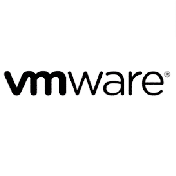Seminarinhalt
After you successfully complete this course, expect to be able to:
- Describe the major hardware and software components of the StoreOnce product line
- Describe important StoreOnce product concepts
- Explain the importance and advantages of deduplication
- Configure StoreOnce devices for initial use
- Create Virtual Tape Libraries (VTL) and NAS shares
- Configure replication between two StoreOnce devices
- Configure Catalyst Stores
- Perform basic troubleshooting and maintenance procedures
Programm
- HPE StoreOnce backup systems
- New HPE StoreOnce product features and benefits
- HPE StoreOnce family comparison—features in HPE StoreOnce models
- HPE StoreOnce Gen4 Virtual Storage Appliance (VSA)
- HPE StoreOnce licenses
Module 2: Installation
- Installing HPE StoreOnce devices
- Available connections
- Network/iSCSI modes of operation
- Single port and dual port modes
- Fibre channel
- Initial configuration process
- HPE StoreOnce Gen4 firmware
Module 3: Web Management Interface
- HPE StoreOnce GUI
- HPE StoreOnce GUI—left-hand menu
- HPE StoreOnce GUI—federation dashboard
- HPE StoreOnce GUI—system dashboard
- HPE StoreOnce GUI—event log
- HPE StoreOnce GUI—settings
- HPE StoreOnce GUI—hardware
- HPE StoreOnce GUI—settings - security
Module 4: Virtual Tape Libraries
- HPE StoreOnce (D2D) backup systems
- Choosing VTL vs. NAS
- Virtual Tape Libraries (VTL)
- iSCSI and fibre channel connections to VTL
- Flexible emulations
Module 5: Basic HPE StoreOnce Catalyst
- HPE StoreOnce Catalyst overview and API
- ISV control of replication
- HPE StoreOnce with HPE GreenLake for Backup and Recovery
- Zerto long-term retention architecture
- HPE StoreOnce Catalyst with Veeam
- HPE StoreOnce Catalyst with Commvault
- HPE StoreOnce Catalyst with HPE Data Protector
- Deduplication options for low and high bandwidth transfers
- What is new in HPE StoreOnce Catalyst
Module 6: NAS Shares
- NAS shares and server configuration
- NAS share authentication
- HPE StoreOnce NAS limitations
Module 7: HPE StoreOnce Deduplication
- Deduplication - what it is and key benefits
- Deduplication - data locality and ratios
- Housekeeping
Module 8: Catalyst Copy and Replication Using VTL and NAS Shares
- HPE StoreOnce Catalyst Copy
- Low-bandwidth - multi-hop
- Definition and replication granularity
- Replication fan-out and fan-in
- Bi-directional replication
- Seeding the replication target
- Replication recovery
- Making replication targets visible to host
- NAS replication and “seeding”
- VTL and NAS replication and configuration
Module 9: HPE StoreOnce Reporting and Appliance Federation
- Reporting
- Device selection example
- Viewing reports
- HPE Infosight
- Next generation HPE StoreOnce—management federation
- Overlapping federation scenario
- Creating a federation
- Different federation topologies
- Recommended networking topology
- System dashboard
- HPE StoreOnce High Availability Manager overview
Module 10: CloudBank and HPE StoreOnce Catalyst Acvanced Features
- HPE StoreOnce Catalyst Cloud Bank and advanced features • CloudBank use cases
- CloudBank configuration
- CloudBank disaster recovery
- HPE StoreOnce Catalyst Copy over fibre channel
- HPE StoreOnce Catalyst Copy over fibre channel—use cases
Module 11: Best Practices
- General best practices
- Flexible emulations best practices
- HPE StoreOnce replication best practices
- Virtual Storage Appliance (VSA) implementation
- Virtual tape library best practices
- NAS share best practices
- Deduplication best practices
- Physical tape offload methods
- Security
- Directory authentication
Module 12: Troubleshooting and Remote Suuport
- Backup or disk space problems
- Capacity thresholds
- Remote support via STATS (RSvS)
- Tools and updates
- Configuration and software updates—improved processes
- HPE StoreOnce Gen4 software upgrade
- REST API developer kit
- Reference documentation
Zielgruppen
Vorkenntnisse
- Basic Windows administration experience
- Basic understanding of SCSI, iSCSI, RAID,fibre channel, Backup, and SAN technologies



